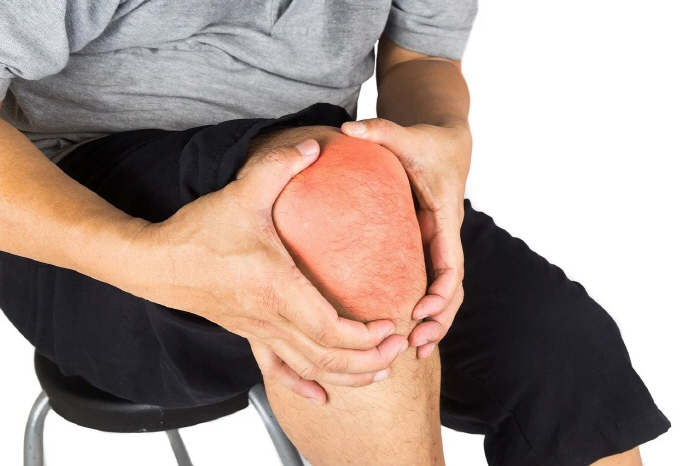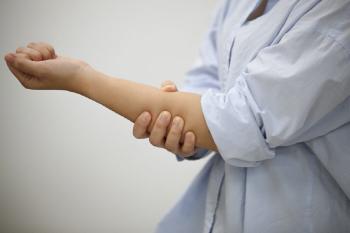Patients with knee arthritis continue to increase...What is the treatment for each stage of progression?
May 08, 2025
|
Arthritis is a disease that causes pain due to inflammation of joints due to damage to cartilage or degenerative changes. It is mainly reminiscent of the knee, but it can occur in any area where there is a joint. It is caused by damage to cartilage, which prevents friction between bones and reduces mechanical stress to facilitate joint movement, and the causes are age, family history, obesity, joint trauma, and inflammation. However, it is not necessarily a disease that occurs with age. If you have suffered from joint diseases since childhood, it can occur even at a relatively young age.
When you think of arthritis, your knees naturally come to mind first. This is because the knee is the largest joint in our body that supports the body's load, so it is vulnerable to arthritis due to its heavy use.
According to data from the National Health Insurance Service (2018-2022), the number of people treated for knee arthroplasty increased by 191,424 (6.7%↑) from 2,874,000 in 2018 to 3,066,000 in 2022, and the annual average increase rate was 1.6%. The number of men increased 12.4% from 860,101 in 2018, with 966,965 people treated in 2022. The number of women was 2,098,638 in 2022, up 4.2% from 201,078 in 2018.
Cartilage is a kind of soft bone that is located above the knee joint and in the middle of the lower bone and acts as a cushion. They do not feel pain because they do not have nerve cells, but if the damage continues due to severe shock or overuse, it gradually wears out, and at some point, the knee joint bone comes into direct contact and causes friction, causing pain.
In particular, degenerative arthritis, which is caused by the gradual wear of cartilage due to body aging, is steadily increasing. According to the Health Insurance Review and Assessment Service, the number of patients who visited hospitals for degenerative arthritis in Korea exceeded 4.3 million as of 2023. Among them, 2.38 million elderly patients aged 65 or older are suffering from degenerative arthritis, with one in four elderly people in Korea suffering from degenerative arthritis.
Professor Park Yong-beom of orthopedic surgery at Chung-Ang University Gwangmyeong Hospital explained, `The number of degenerative arthritis patients is increasing due to the aging population,' adding, `Recently, as more young people enjoy intense exercise such as running craze and crossfit, the number of young knee arthritis patients is increasing.'
The degree of progression of knee arthritis is mainly divided into the Kellgren-Lawrence Grade (K-L Grade). This classification is based on X-ray findings and is largely divided into 1 to 4 stages depending on the deformation of the joint structure and pain.
In the case of the first stage, which is the initial stage, there is little change in the knee structure and pain appears intermittently. At this time, light aerobic exercise and stretching are recommended to improve lifestyle, and nonsteroidal anti-inflammatory drugs are prescribed to relieve pain if necessary.
In the case of the second stage, the frequency of pain has increased compared to the first stage to the extent that pain occurs after walking or running. At this time, nonsteroidal anti-inflammatory drugs and painkillers are taken centering on conservative treatment, and additional physical therapy such as thermal treatment and ultrasound and injection treatment such as hyaluronic acid are performed if necessary.
Stage 3 is a stage where pain is maintained continuously, and changes in the knee structure are in progress. Similarly, medication, physical therapy, and injection therapy are performed, but if the pain is severe, surgery may be necessary.
The fourth stage is difficult to walk due to changes in the knee structure, and daily life is difficult. By the fourth stage, the symptoms do not improve with conservative methods or physical therapy, so surgery is inevitable. Artificial joint replacement is mainly performed, and for young patients, proximal tibia osteotomy can be performed.
Once damaged, knee cartilage does not regenerate or recover naturally. This is why if you suspect knee cartilage damage, you should see a doctor quickly. The more timely treatment, the more appropriate and effective treatment can be given to the patient before the degree of cartilage damage worsens.
In the case of knee arthritis, treatment methods that used artificial products or alternative methods such as allografts to maintain the function of damaged or dysfunctional parts were the mainstream. In recent years, regenerative therapy has become a new paradigm in the medical field, including orthopedics.
Treatment using stem cells is typically a treatment in which cells, including stem cells, are collected from bones or fat and injected into the knee joint. In basic research, it has been found that it differentiates chondrocytes and promotes regeneration, and based on this, it is being used in clinical practice in anticipation of its effectiveness. Currently, stem cells extracted from autologous bone marrow and autologous fat are used for knee osteoarthritis injection treatment using stem cells.
However, since stem cell injection treatment cannot eventually be an alternative to artificial joint surgery, it is important to select an accurate treatment based on a specialist's diagnosis.
In response, Professor Park Yong-beom explained, "It is effective to perform stem cell treatment in stages 2 to 3 of arthritis. In the case of the fourth stage of the terminal stage, it is impossible to regenerate cartilage completely damaged by the contact of the bone and the cartilage is completely worn out using stem cell injection treatment.".
In December last year, the self-platelet rich plasma (PRP), which was previously applied only to elbow and rotator cuff surgery, was also approved for knee osteoarthritis, increasing the choice. This treatment draws the patient's blood, separates platelet components using a centrifuge, and injects concentrated platelets into the patient's knees.
There are many growth factors in autologous platelet-rich plasma (PRP)'. 'Growth Factor' is a generic term for proteins that help differentiate and survive cells by promoting cell division to increase the number of cells and increase their size by promoting metabolism. Platelet-derived growth factors, epithelial cell growth factors, insulin-like growth factors, fibroblast growth factors, connective tissue growth factors, and vascular endothelial growth factors are effective in repairing and regenerating lesion tissue and healing various damages. In addition, there is an advantage that no special immune response occurs because the patient's own blood is used rather than external chemicals.
Professor Park Yong-beom said "Automatic platelet-rich plasma can be easily collected from the human body, and it has many characteristics, so it is being studied around the world."As treatments develop gradually and you have more options, you can improve your quality of life if you check your joint condition in advance and start treatment quickly," he advised.
|
This article was translated by Naver AI translator.















